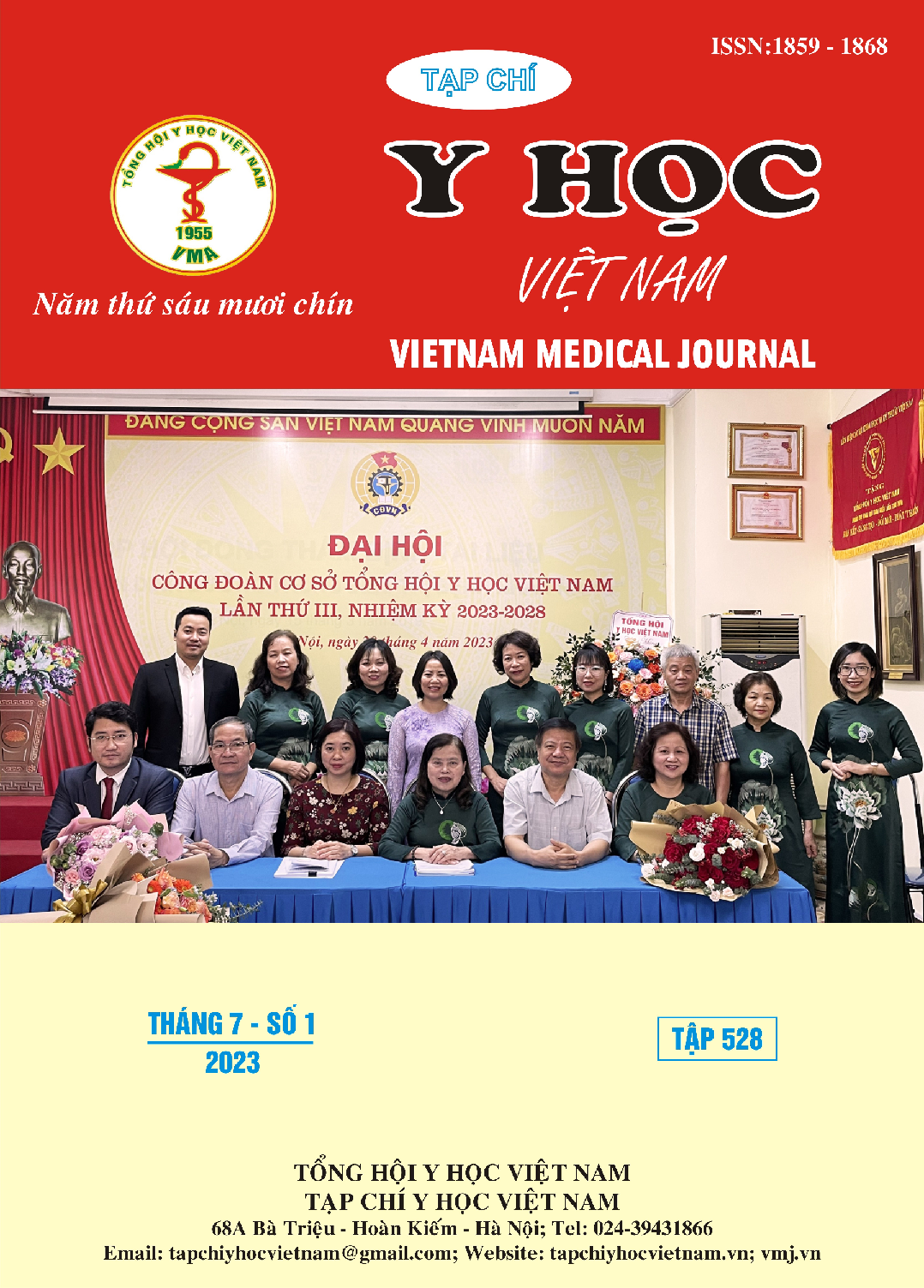SHORT-TERM OUTCOME OF LAPAROSCOPIC ESOPHAGECTOMY WITH THREE-FIELD LYMPH NODE DISSECTION FOR ESOPHAGEAL CANCER AT CHO RAY HOSPITAL
Main Article Content
Abstract
Background: Esophageal squamous cell carcinoma is one of worst prognosis cancer due to extensive lymph node metastasis and local invasiveness. Our objective in this study is to evaluate surgical outcome, feasibiliy and benefits of three-field lymph node dissection in treatment esophageal cancer. Materials and Methods: Between November 2015 to December 31, 2022, a total of 114 patients had undergone esophagectomy with three-field lymph node dissection at the department of digestive surgery, Cho Ray hospital, Vietnam. All of the patients had primary squamous cell carcinoma of thoracic esophagus. This is prospective descriptive study. Results: The mortality rate after laparoscopic esophagectomy with 3-Field lymph node dissection was 0.88%. The overall complication rate was 50.9%. Recurrent laryngeal nerve paresis is the most common complication, accounting for 21.9%, anastomosis and pneumonia respectively 11.4% and 10.5%, lymphatic leakage accounted for 2.6%. The rate of lymph node metastasis after esophagectomy with 3-field lymph node dissection was 49.1%. In which, cervical lymph node metastasis of middle and lower thoracic esophageal cancer 19.2%, 6.9%, respectively. The rate of cervical lymph node metastasis for tumors with T1 stage is 13%, T3 is 23.5% and T4 is 16.7%. Conclusion: The high rate of metastases to the cervical lymph node suggests the need for laparoscopic esophagectomy with 3-Field lymphadenectomy for squamous cell carcinoma. However, it is necessary to balance the benefits and risks when applying this technical process
Article Details
Keywords
Esophageal cancer, Transthoracic esophagectomy, Three-Field lymph node dissection
References
2. Hata, T.M. and J. Moyers, Preoperative patient assessment and management. Clinical anesthesia, 2009. 581.
3. Sung, H., et al., Global cancer statistics 2020: GLOBOCAN estimates of incidence and mortality worldwide for 36 cancers in 185 countries. CA: a cancer journal for clinicians, 2021. 71(3): p. 209-249.
4. Orringer, M.B., B. Marshall, and M.D. Iannettoni, Eliminating the cervical esophagogastric anastomotic leak with a side-to-side stapled anastomosis. The Journal of thoracic and cardiovascular surgery, 2000. 119(2): p. 277-288.
5. Hu, H., et al., Is anterior mediastinum route a shorter choice for esophageal reconstruction? A comparative anatomic study. European journal of cardio-thoracic surgery, 2011. 40(6): p. 1466-1469.
6. Wong, A.C., S. Law, and J. Wong, Influence of the route of reconstruction on morbidity, mortality and local recurrence after esophagectomy for cancer. Digestive Surgery, 2003. 20(3): p. 209-214.
7. Yajima, S., Y. Oshima, and H. Shimada, Neck dissection for thoracic esophageal squamous cell carcinoma. International Journal of Surgical Oncology, 2012. 2012.
8. Lee, D.H., et al., Outcomes of cervical lymph node recurrence in patients with esophageal squamous cell carcinoma after esophagectomy with 2-field lymph node dissection. The Journal of Thoracic and Cardiovascular Surgery, 2013. 146(2): p. 365-371.
9. Ozawa, S., et al., Postoperative complications of minimally invasive esophagectomy for esophageal cancer. Annals of Gastroenterological Surgery, 2020. 4(2): p. 126-134.


